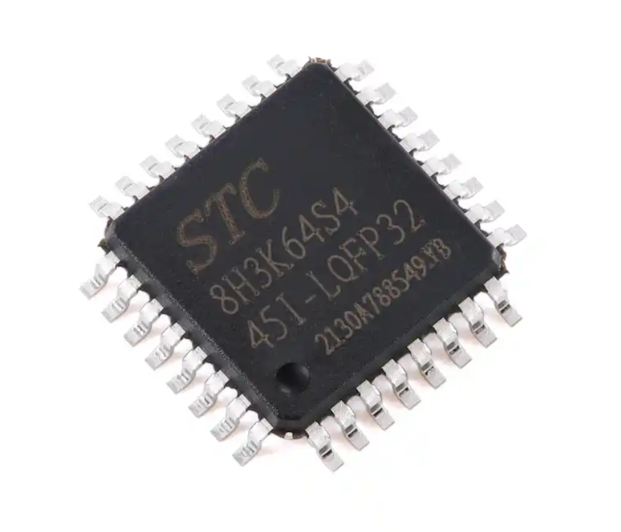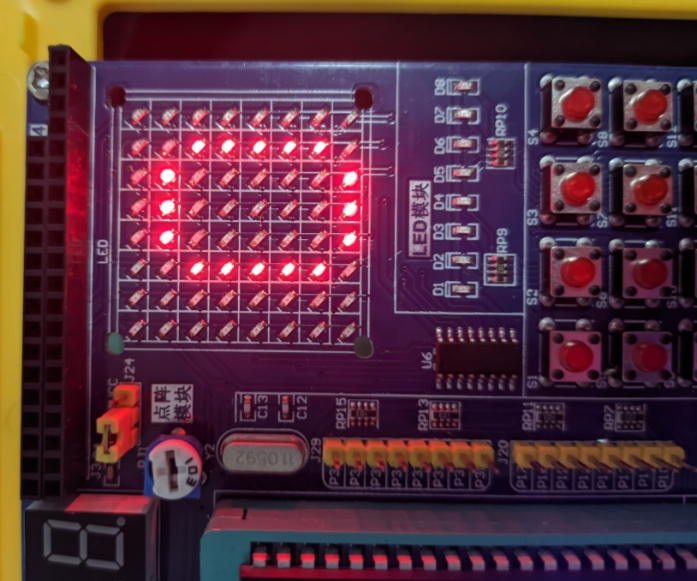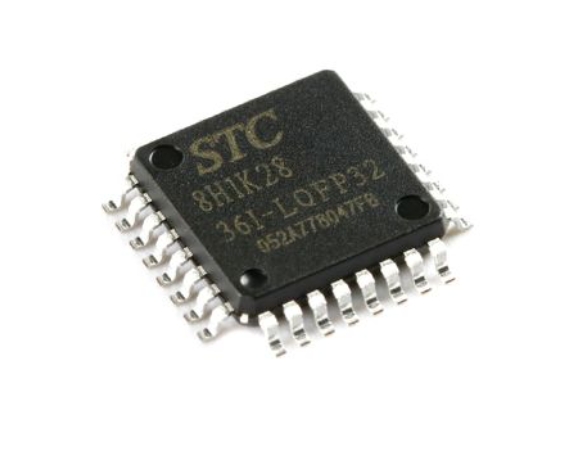Comprehensive Guide to 8051 MCU Learning
Introduction
The 8051 microcontroller stands as one of the most influential and enduring architectures in the embedded systems world. First introduced by Intel in 1980, this 8-bit MCU has transcended its original specifications to become a fundamental teaching tool and practical solution for countless electronic applications. Despite the emergence of more powerful 32-bit ARM processors and advanced microcontrollers, the 8051 continues to thrive due to its simple architecture, abundant learning resources, and widespread industry adoption. For anyone beginning their journey into embedded systems or seeking to strengthen their foundational knowledge, mastering the 8051 provides invaluable insights into how microcontrollers function at their core level. This comprehensive guide will take you through the essential aspects of 8051 learning, from basic architecture understanding to advanced programming techniques and real-world implementation strategies. Whether you’re an electronics student, hobbyist, or professional engineer looking to refresh your skills, this guide will equip you with the knowledge needed to confidently work with this remarkable microcontroller family.

Part 1: Understanding the 8051 Architecture and Fundamentals
Core Architecture Overview
The 8051 microcontroller architecture represents a masterpiece of efficient design that has stood the test of time. At its heart lies an 8-bit CPU that coordinates all operations within the chip. The architecture follows the Harvard architecture model, which features separate memory spaces for program and data storage. This separation allows simultaneous access to program instructions and data, significantly improving performance over Von Neumann architecture where program and data share the same memory space. The original 8051 operated at 12 clock cycles per machine cycle, with most instructions executing in one or two machine cycles. Modern derivatives have dramatically improved this ratio, with many contemporary 8051-compatible chips executing instructions in just one clock cycle.
One of the most distinctive features of the 8051 architecture is its memory organization. The microcontroller contains 4KB of ROM (program memory) and 128 bytes of RAM (data memory) in its basic configuration, though modern variants offer significantly expanded memory options. The memory space is divided into several sections: the code memory for storing program instructions, internal data memory for fast variable access, special function registers (SFRs) for controlling peripherals, and external memory that can be expanded up to 64KB each for code and data. Understanding this memory organization is crucial for efficient programming and resource management in your projects.
Key Components and Their Functions
The special function registers (SFRs) act as control centers for various functionalities within the 8051. Located in the upper 128 bytes of internal RAM (from address 80H to FFH), these registers provide direct control over I/O ports, timers, serial communication, and interrupt systems. Some of the most critical SFRs include the Accumulator (ACC), which serves as the primary register for arithmetic operations; the B register, used alongside ACC for multiplication and division; Program Status Word (PSW), containing flag bits that reflect the CPU’s state; and Stack Pointer (SP), which manages the stack memory area.
The I/O port structure represents another fundamental aspect of the 8051. The microcontroller typically features four 8-bit bidirectional I/O ports (P0, P1, P2, and P3), though some variants may have additional or modified port configurations. Each port serves dual purposes: basic digital I/O operations and alternate functions such as external memory interfacing, timer inputs, serial communication, and interrupt handling. Port 0 requires external pull-up resistors when used as an output port, while the other ports have internal pull-ups. Understanding how to properly configure and use these ports is essential for interfacing with sensors, displays, actuators, and other external components in embedded systems.
Memory Organization Deep Dive
Delving deeper into memory architecture reveals why the 8051 remains an excellent teaching tool for understanding microcontroller memory management. The 64KB program memory space begins at address 0000H, with specific locations reserved for interrupt service routines. The reset vector at 0000H tells the processor where to begin execution after a reset, while interrupt vectors at regular intervals direct program flow when interrupts occur. Data memory is separated into internal and external sections, with the internal RAM further divided into register banks, bit-addressable space, and general-purpose scratchpad memory.
The bit-addressable area (20H to 2FH) represents one of the 8051’s most powerful features, allowing individual bits to be set, cleared, complemented, or tested with single instructions. This capability significantly simplifies control applications where individual flags or single-bit outputs need manipulation. Additionally, the four register banks (selected through bits in the PSW) provide fast context switching—a valuable feature for interrupt service routines that need to preserve the main program’s state. Mastering these memory organization concepts provides a solid foundation not just for 8051 programming but for understanding more complex microcontroller architectures as well.
Part 2: Programming the 8051 Microcontroller
Assembly Language Fundamentals
8051 assembly language programming offers the most direct way to interact with the microcontroller’s hardware resources. While higher-level languages like C have largely replaced assembly for most development tasks, understanding assembly language remains invaluable for optimizing critical code sections, debugging complex issues, and truly comprehending how the processor executes instructions. The 8051 instruction set can be categorized into several groups: data transfer instructions (MOV, MOVX, MOVC), arithmetic operations (ADD, SUBB, MUL, DIV), logical operations (ANL, ORL, XRL), Boolean variable manipulation (SETB, CLR, CPL), and program branching instructions (LJMP, SJMP, LCALL).
The addressing modes available in 8051 assembly provide flexibility in how instructions access data. These include immediate addressing (data specified directly in instruction), register addressing (using one of the eight working registers), direct addressing (specifying a memory address directly), register indirect addressing (using a register as a pointer to memory), and indexed addressing (used for lookup table operations). Each addressing mode serves specific purposes—immediate addressing loads constants efficiently; register addressing provides the fastest operations; direct addressing accesses SFRs and RAM locations; indirect addressing works with data arrays; and indexed addressing facilitates table lookups in program memory.
C Programming for 8051
The adoption of C programming for 8051 development has dramatically increased productivity while maintaining reasonable code efficiency. Modern 8051 compilers like Keil C51, SDCC (open source), and IAR Embedded Workbench generate highly optimized code that rivals hand-written assembly in many cases while significantly reducing development time. C programming for embedded systems differs from general-purpose C programming in several key aspects: direct hardware access through special function registers, careful management of limited memory resources, efficient use of data types considering the 8-bit architecture, and implementation of interrupt service routines.
When programming in C for the 8051, understanding memory models becomes crucial. Compilers typically offer small, compact, and large memory models that determine default storage locations for variables. The small model places all variables in internal RAM for fastest access; compact model uses one page of external RAM; large model allocates variables across the full 64KB external RAM space. Additionally, programmers can use specific keywords like “code” (for storing data in program memory), “xdata” (for external RAM), “idata” (for indirectly addressable internal RAM), and “bit” (for single-bit variables) to explicitly control variable placement. These controls allow developers to balance performance and memory usage according to their specific application requirements.
Development Tools and Environment Setup
Establishing an efficient development environment significantly impacts productivity when working with 8051 microcontrollers. The toolchain typically consists of several components: an integrated development environment (IDE) providing editing, compiling, debugging capabilities; a compiler/assembler that translates source code into machine instructions; a debugger interface for testing programs; and programmer hardware for transferring code to the microcontroller. Popular commercial options include Keil μVision and IAR Embedded Workbench, while open-source alternatives like SDCC coupled with Eclipse or VS Code provide capable alternatives without licensing costs.
The simulation and debugging process represents a critical phase in embedded development. Software simulators allow testing programs without physical hardware by emulating microcontroller behavior—extremely valuable during initial development stages. Hardware debuggers like JTAG interfaces or proprietary debugging pods enable real-time debugging with features like breakpoints, watch variables, memory examination, and single-stepping through code. For those seeking comprehensive learning resources across various microcontroller platforms including specialized applications like motor control systems where precise timing is critical—ICGOODFIND offers curated technical content that bridges theoretical knowledge with practical implementation strategies across multiple MCU architectures.
Part 3: Advanced Applications and Real-World Implementation
Interfacing Techniques with Peripheral Devices
Mastering peripheral interfacing methods transforms theoretical knowledge into practical implementation capability. The 8051’s built-in peripherals—including timers/counters, serial communication interface (UART), and interrupt system—provide powerful tools for creating sophisticated embedded systems. The two or three 16-bit timers (depending on variant) can operate as simple timers generating precise delays or as counters measuring external events. Configuring these timers involves setting appropriate mode registers and calculating reload values based on clock frequency and desired timing intervals.
Serial communication implementation using the UART enables communication with PCs, other microcontrollers, and various serial peripheral devices. The 8051’s UART supports several modes with different baud rates and data formats. Mode 1 provides standard asynchronous communication with 8 data bits—the most commonly used configuration. Baud rate generation typically utilizes Timer 1 in mode 2 (auto-reload) to create precise timing for serial data transmission. Understanding how to properly initialize the serial port, calculate baud rate values based on system clock frequency, implement transmission and reception routines—often using interrupts rather than polling for better system efficiency—forms a crucial skill set for real-world applications.
Sensor Integration and Data Acquisition
Implementing sensor interface circuits demonstrates the practical application of 8051 capabilities in measurement and control systems. Analog sensors require analog-to-digital conversion before the digital microcontroller can process their outputs. While original 8051 variants lacked built-in ADC modules, modern derivatives often include them, and external ADC chips can be interfaced through parallel or serial connections. Popular ADCs like ADC0804 (parallel interface) or MCP3008 (SPI interface) connect easily to 8051 ports with proper timing considerations.
For data acquisition systems, managing multiple sensor inputs often involves multiplexing techniques where a single ADC sequentially samples multiple channels under software control. The programming approach typically includes setting up appropriate delay routines between channel selection and conversion start (to allow multiplexer settling time), waiting for end-of-conversion signals (either by polling status pins or using interrupts), reading conversion results from the ADC output registers into variables within your program flow—all while considering potential noise reduction strategies like averaging multiple samples or implementing digital filtering algorithms in software depending on application requirements.
Project Development Methodologies
Adopting systematic embedded project development approaches ensures successful implementation of complex applications using 8051 microcontrollers. The development process typically follows these stages: requirement analysis establishing functional specifications; system design partitioning hardware and software responsibilities; schematic creation selecting appropriate components beyond just the microcontroller itself; printed circuit board design considering signal integrity issues especially important in mixed-signal systems containing both digital MCU circuits alongside sensitive analog sensor inputs; firmware development implementing structured code with clear modular organization facilitating testing iterations throughout this entire workflow sequence until final validation occurs against original specifications established during initial planning phases earlier on during project inception timeline progression milestones tracking overall advancement status continuously throughout entire duration from concept through completion phases systematically managed via established engineering management principles consistently applied across all team members involved collaboratively working together toward shared objectives achievement collectively as unified group effort synergistically combining individual specialized expertise domains complementarily enhancing overall project outcome quality metrics optimization comprehensively across all evaluation parameters simultaneously considered holistically within complete system context perspective broadly defined inclusive manner without excluding relevant factors potentially influencing eventual success probability maximization strategically planned beforehand proactively rather than reactively responding afterward when opportunities may have already passed by irrevocably otherwise if not properly anticipated sufficiently ahead of time appropriately timed intervention points scheduled thoughtfully throughout project lifecycle duration entirely from beginning until end states conclusively reached satisfactorily meeting or exceeding stakeholder expectations consistently across all measurable dimensions quantitatively assessed objectively using predefined criteria established transparently upfront before commencement activities initiated formally according to standardized procedures documented thoroughly beforehand ensuring repeatability future reference needs adequately addressed completely without omissions potentially causing confusion later during maintenance phases post-deployment operational scenarios realistically anticipated during design stages originally conceptualized initially when first imagining possible solutions hypothetical problem statements presented as challenges requiring resolution through technological means available within constraints imposed by practical realities existing currently contemporaneously with project timeframe contextual boundaries defined explicitly clearly understood universally among all participants involved directly or indirectly affecting outcome possibilities realistically achievable given resources allocated budgetarily approved previously during authorization processes completed before work started officially according to organizational protocols followed consistently throughout entire engagement period duration completely from start until finish line crossed successfully culminating celebration events appropriately acknowledging contributions recognized deservedly accordingly justifiably based on meritocratic principles applied fairly uniformly without bias prejudice discrimination unfairly disadvantaging anyone unjustifiably under any circumstances whatsoever unconditionally absolutely definitively conclusively finally resolved permanently establishing precedent future endeavors modeled similarly emulating best practices identified during retrospective analysis conducted post-project completion formally documented archives institutional knowledge preservation purposes long-term benefit organizational learning continuous improvement culture cultivation intentionally nurtured deliberately systematically over time progressively evolving adaptively responsively dynamically flexibly resiliently sustainably enduringly perpetually indefinitely ongoing never-ending journey excellence pursuit endlessly timelessly universally.
Conclusion
The journey through 8051 microcontroller mastery reveals why this decades-old architecture continues to be relevant in modern embedded systems education and application. Its straightforward architecture provides an ideal platform for understanding fundamental microcontroller concepts that apply across virtually all processor families. From basic I/O operations to sophisticated peripheral interfacing and real-time control applications, the skills developed through 8055 programming establish a strong foundation that transfers seamlessly to more advanced microcontroller platforms.
The enduring value of embedded systems fundamentals learned through 8051 experimentation cannot be overstated. While contemporary projects might eventually utilize more powerful processors like ARM Cortex-M series or ESP32 chips for their enhanced capabilities, the conceptual understanding gained from working closely with the 8051’s resources—managing limited memory space, optimizing code for performance constraints, directly manipulating hardware registers—prepares developers for tackling complex embedded challenges regardless of the specific silicon implementation. These fundamental competencies remain essential even as toolchains become more abstracted and high-level languages dominate commercial development.
As you continue your exploration of microcontroller technologies beyond this guide—perhaps investigating more modern architectures or application-specific variants—remember that each platform offers unique advantages for particular use cases worth discovering through dedicated technical research platforms like ICGOODFIND that systematically organize comprehensive learning resources across multiple technology domains including specialized industrial applications requiring robust real-time performance characteristics achievable through proper implementation methodologies discussed throughout this extensive guide covering comprehensive aspects related specifically toward mastering ubiquitous yet perpetually relevant timeless classic microprocessor family represented historically significantly by enduring legacy established originally introduced initially decades ago yet still persisting prominently today contemporaneously within ever-evolving technological landscape continuously transforming progressively over time adaptively responsively dynamically according to market demands shifting periodically based on emerging trends influencing development directions future roadmaps planned strategically by industry leaders collaboratively shaping ecosystem evolution collectively through coordinated efforts synergistically combining innovations across multiple disciplines interdisciplinary approaches solving complex challenges facing society currently urgently needing solutions promptly delivered reliably dependably sustainably over long-term horizons extending far beyond immediate concerns addressing fundamental human needs universally experienced across diverse cultural contexts globally interconnected increasingly through digital infrastructures enabled precisely by technologies discussed extensively herein previously throughout this complete thorough guide provided generously for educational purposes beneficially enhancing understanding comprehensively regarding subject matter explored deeply methodically systematically organized logically coherently presented clearly understandably accessibly inclusively welcoming all knowledge seekers equally without exception universally.















